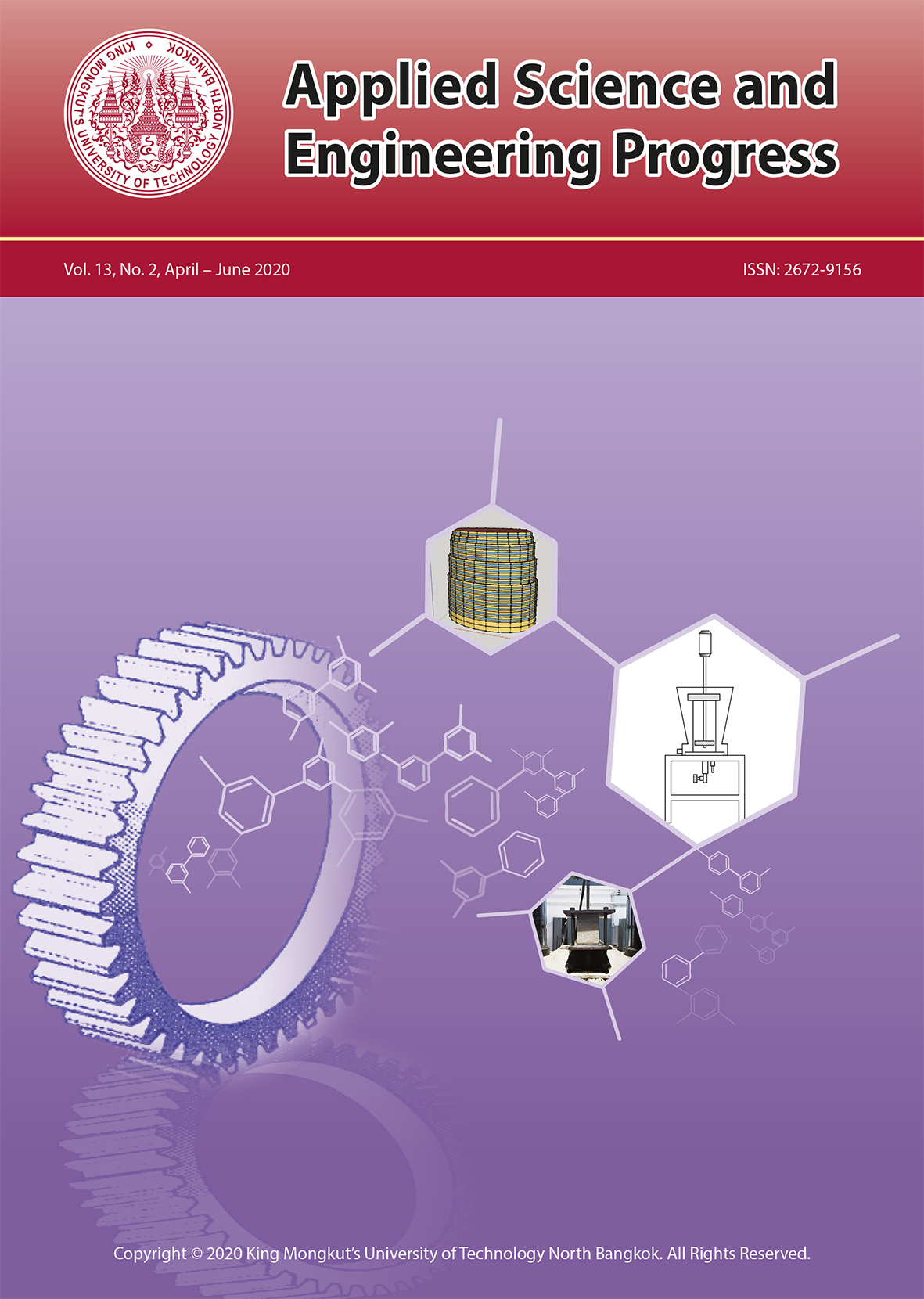Enzymatic Deinking of Xerographic Waste Paper with Non-ionic Surfactant
Main Article Content
Abstract
Cellulase enzyme deinking of xerographic waste paper was investigated in this work. Enzyme action was assisted by using non-ionic surfactant (Triton X-100). Deinking steps were done as followed: converting xerographic waste paper to pulp, mixing pulp with enzyme and surfactant at 50°C for 30 min without pH adjustment, then removing ink from pulp slurry with flotation process. The results showed that cellulase deinking effectively removed ink from pulp slurry. That was indicated by the significantly decrease of ERIC (Effective Residual Ink Concentration) and pulp brightness improvement. Furthermore, the physical properties such as tensile index and tear index were improved with deinking that was influenced by enzyme dosage and surfactant addition.
Article Details
References
[2] S. Zhenying, D. Shijin, C. Xuejun, G. Yan, L. Junfeng, W. Hongyan, and S. X. Zhang, “Combined de-inking technology applied on laser printed paper,” Chemical Engineering and Processing: Process Intensification, vol. 48, no. 2, pp. 587–591, Feb. 2009.
[3] P. Bajpai, “Process steps in recycled fibre processing,” in Recycling and Deinking of Recovered Paper, P. Bajpai, Ed. London, England: Elsevier, 2014, pp. 55–83.
[4] C. K. Lee, I. Darah, and C. O. Ibrahim, “Enzymatic deinking of laser printed office waste papers: Some governing parameters on deinking efficiency,” Bioresource Technology, vol. 98, no. 8, pp. 1684– 1689, May 2007.
[5] A. Saxena and P. Chauhan, “Role of various enzymes for deinking paper: A review,” Critical Reviews in Biotechnology, vol. 37, pp. 1–15, Jul. 2016.
[6] S. Vyas and A. Lachke, “Biodeinking of mixed office waste paper by alkaline active cellulases from alkalotolerant Fusarium sp.,” Enzyme and Microbial Technology, vol. 32, no. 2, pp. 236– 245, Feb. 2003.
[7] P. Bajpai, P. K. Bajpai, and R. Kondo, “Enzymatic deinking,” in Biotechnology for Environmental Protection in the Pulp and Paper Industry, Baden-Württemberg, Germany: Springer-Verlag, 1999, pp. 91–108.
[8] J. K. Borchardt, “The use of surfactants in de-inking paper for paper recycling,” Current Opinion in Colloid & Interface Science, vol. 2, no. 4, pp. 402–408, Aug. 1997.
[9] P. Chandranupap, P. Chandranupap, and P. Kongsat, “Flotation deinking of xerographic and laser-printed paper: Influence of surface-active substances,” Advance Material Research, vol. 287– 290, pp. 3028–3031, Jul. 2011.
[10] L. S. Clescerl, A. E. Greenberg, and A. D. Eaton, Standard Methods for the Examination of Water and Wastewater, 20th ed. Washington, DC: American Public Health Association, 1998, pp. 1386–1397.
[11] Y. Zhao, Y. Deng, and J. Y. Zhu, “Roles of surfactants in flotation deinking,” Progress in Paper Recycling, vol. 14, no. 1, pp. 41–45, Nov. 2004.
[12] M. A. Hubbe, “Fines management for increased paper machine productivity,” presented at Conference on Science and Tecnological Advance in Wet End Chemistry, Barcelona, Spain, May 22–23, 2002.
[13] Paper, board and pulps - Measurement of diffuse blue reflectance factor - Part 1: Indoor daylight conditions (ISO brightness), ISO Standard 2470-1, 2016.
[14] A. L. Mørkbak and W. Zimmermann, “Deinking of mixed office paper, old newspaper and vegetable oil-based ink printed paper using cellulases, xylanases and lipases,” Progress in Paper Recycling, vol. 7, no. 2, pp. 14–21, Feb. 1998.
[15] C. K. Lee, D. Ibrahim, C. O. Ibrahim, and W. R. W. Daud, “Enzymatic and chemical deinking of mixed office wastepaper and old newspaper: Paper quality and effluent characteristics,” BioResources, vol. 6, no. 4, pp. 3859–3875, Aug. 2011.
[16] C. K. Lee, D. Ibrahim, and I. C. Omar, “Enzymatic deinking of various types of waste paper: Efficiency and characteristics,” Process Biochemistry, vol. 48, no. 2, pp. 299–305, Feb. 2013.
[17] L. Nazari, S. Sarathy, D. Santoro, D. Ho, M. B. Ray, and C. Xu, “Recent advances in energy recovery from wastewater sludge,” in Direct Thermochemical Liquefaction for Energy Applications, L. Rosendahl, Ed. Cambridge, England: Woodhead Publishing, 2018, pp. 67–100.
[18] The Pollution Control Department, “Water Quality Standards,” The Pollution Control Department, Bangkok, Thailand, Mar. 2016. [Online] Available: http://www.pcd.go.th/info_serv/reg_std_water04. html
[19] T. J. Kim, S. S. K. Ow, and T. J. Eom, “Enzymatic deinking method of wastepaper,” in Tappi Pulping Conference, 1991, pp. 1023–1030.
[20] P. Chandranupap, P. Chandranupap, and P. Kongsat, “Washing deinking of mixed office wastepaper as a new resource for electrical purposed paper,” Advance Material Research, vol. 287–290, pp. 3024–3027 Jul. 2011.


